Why wildfires could come to inner London
Plus: Facial recognition arrests at Notting Hill Carnival, TfL tries to convince people to use headphones, and the London cricket team bought by a family with 900 crocodiles.
Wildfires have become a fact of life in the capital in recent years, with a growing number of conflagrations around the fringes of Greater London at the points where the city blends into the countryside. But as we come to the end of one of the hottest summers in recent years, there are growing concerns that central London’s parks — often next to royal palaces — could go up in flames, according to maps and analysis shared with London Centric.
When we visited some of the high-risk areas yesterday afternoon the grass was parched. Is a combination of climate change, rewilding and disposable barbecues putting central London at risk?
Scroll down to find out which parks are at risk.
We’ve made one of our favourite members-only stories free to read for a short period of time. Click here to read Simon Usborne’s investigation into the world of mudlarking. Please do consider subscribing if you want to support our work and receive similar pieces of ambitious, original journalism about the capital in your inbox.
TfL will ask people to stop playing music on their phones — whether it’s enforced is another matter.
Transport for London has announced a new poster campaign against headphone dodgers on its services, urging passengers not to “disturb others with loud music or calls”. However, despite the positive headlines there’s little clarity on whether TfL will be actively asking staff to enforce the ban.
TfL’s bylaws already explicitly ban playing music on its passenger services, with a potential fine of up to £1,000, using this wonderfully archaic phrasing:
Except with written permission from the Operator no person on the premises shall, to the annoyance of any person:
(i) sing; or
(ii) use any instrument, article or equipment for the production or reproduction of sound.
According to a freedom of information request, no one was prosecuted for breaching these rules in 2024 — although one person was issued a formal warning. In reality, according to TfL, if staff do encounter noisy passengers they will simply ask people to turn off the sound.
There are various theories as to why playing sound out loud on public transport has become normalised. One of our favourites is that many smartphones used to come with a pair of headphones and an audio socket — but that has been cast aside in a bid to encourage people to buy wireless earbuds. If you don’t have wireless headphones, you end up playing the noise out loud. And while young Londoners tend to get the criticism for this, we’d note that in our experience older passengers playing videos or voice notes on full volume are some of the worst offenders in this regard.
If you have a better theory as to why public transport has got noisier, do leave a comment.
The London cricket team’s new billionaire owners, 250 leopards, and accusations of money laundering at their giant private zoo.
London’s professional cricket teams have remained immune to the dubious billionaire investors who own the capital’s football clubs — until now. Oval Invincibles, the south London franchise in The Hundred, the family-friendly school holiday competition, are set to receive an enormous investment from India’s unfathomably rich Ambani family. As a result they are expected to be renamed MI London, short for Mumbai Indians, the name of one of the owners’ other cricket teams.
This cash injection from Asia’s richest family shows how the capital is still an attractive place to invest for the global elite. Unfortunately, it has also coincided with this morning’s news that the Ambanis’ private zoo in Gujarat is being investigated by the Indian Supreme Court over potential “unlawful acquisition of animals, particularly elephants, other violations of wildlife regulations, and money laundering”. Earlier this year the German newspaper SZ reported that the zoo, which is next to the family’s giant oil refinery, imported 39,000 animals last year. This helped provide the backdrop for the world’s most expensive wedding for one of the family’s children, with a guest list including global figures ranging from Tony Blair to Boris Johnson, plus Mark Zuckerberg and Kim Kardashian.
If the cricket team’s new investors are forced to offload any of the zoo’s 200 elephants, 50 bears, 160 tigers, 200 lions, 250 leopards, or 900 crocodiles then releasing them before a cricket match at the Oval could enliven proceedings.
Where’s London’s pedicab regulations?
A pedicab collided with a bus in Soho in the early hours of Monday morning, leaving three people injured, two seriously, in another sign of the chaos associated with the unregulated industry. The pink, fluffy pedicab was carrying a driver and two passengers on Charing Cross Road when the crash occurred at around 1am. Photos taken after the incident showed the pedicab on its side in the middle of the road, and the bus missing its front numberplate.
A London pedicab spokesperson told the Telegraph that a group of drunk men had stolen the pedicab and caused the crash while the vehicle’s owner was getting food.
As London Centric previously reported, the capital's pedicab scene is dominated by rivalry and racism, extortionate fares, scammed passengers, sex workers, e-bike battery fires, and desperate drivers. Transport for London's plans to regulate the sector, expected this year, are still yet to be finalised.
Gatwick’s new security scanners defeated by wet wipes.
Passengers at many London airports will soon be able to leave liquids and large electrical items in their hand luggage when passing through security, following the much-delayed introduction of CT scanners. One of the first airports to make the switch is Gatwick, just in time for the summer rush.
That is, unless you're travelling with a pack of wet wipes. The item, a requirement for anyone with young children and many people with disabilities, seem to confuse the expensive new scanners and cause them to flag bags as security risks. London Centric watched this summer as passenger after passenger had their bag rejected and taken aside for extra security checks, with staff wearily asking whether there are wet wipes inside — making the scanning process slower for many people than the old system, particularly in the family lanes.
Gatwick declined to comment on security grounds, while a spokesperson for the Department for Transport said: “The UK has one of the most robust aviation security regimes in the world.”
Facial recognition responsible for one in eight arrests at Notting Hill Carnival.
Facial recognition is going to be one of the big issues which defines London life over the coming years, given the trade-off between invasions of privacy and a potential reduction in crime. The capital’s police forces are on a PR offensive to promote live facial recognition technology by offering journalists insider access to sit alongside camera operators while arrests are made. The Met has also released video of arrests they attribute to facial recognition — such as this sex offender caught with a child in south London.
This year’s Notting Hill Carnival is likely to feature heavily in the debate over whether the technology should be rolled out further. Ahead of the festival civil liberty groups criticised the Metropolitan Police’s plans to reintroduce live facial recognition on the approaches to the event, emphasising the technology’s “racial bias” and how facial recognition “unfairly targets the community that carnival exists to celebrate”.
This morning the Met said that one in eight arrests at the carnival were based on comparing attendees’ faces to images on police watch lists. Live facial recognition played a part in 52 of the 423 arrests across the two days, stopping “those who have attempted to come to Carnival to cause harm to others” before they reached the giant street party. Police said that as a result there were “far fewer incidents of serious violence than in recent years” at this year’s event, where there were two stabbings but no life-threatening injuries.
The maps that show where wildfires could break out in central London’s parks.
Wildfires are becoming increasingly common on the fringes of Greater London but new analysis produced for London Centric shows how wildfires could easily spread in the large inner city parks that define London.
Climate change, disposable barbecues and rewilding policies that allow grass to grow long are combining to bring the risk of wildfires to green spaces across the capital, with inner London sites such as Hyde Park and Brockwell Park among the most high risk locations.
Kensington Palace and Buckingham Palace are located next to some of the most vulnerable locations in the capital, due to their proximity to open spaces where wildfires could take hold.
“What makes the perfect wildfire? Fuel, fuel, fuel,” explained Rich Flemmings, chief executive of Map Impact. His company splits the country into 50 metre segments of land. They then combine data on heat, moisture, vegetation, and crowds to determine each spot’s fire risk, before selling the information to insurance companies and local authorities.

Wildfires are made more likely by high numbers of people – who bring potential ignition sources such as disposable barbecues, cigarettes and glass bottles that magnify the sun’s rays – combined with proximity to dry grass and other vegetation that can easily catch alight.
London parks’ increasingly yellow grass, dried out by heatwaves, creates perfect conditions for flames from a small source to spread, especially in longer grass.
LSE assistant professor and wildfire specialist Dr Thomas Smith told London Centric that while “we [often] consider wildfire risk to be something that is suburban at best, rural or suburban, we need to wake up” to the risks in city parks.
“It’s exactly the same situation in central London,” he said, drawing a comparison with the capital’s outskirts, where multiple wildfires have raged in July and August. “It’s no different. You’ve got all the same ingredients, and a lot more people,” he said. “[There is] no shortage of ignitions in central London parks, and you can’t rule out arson, too”.
Smith said the risk could be even higher than Map Impact’s maps suggested, highlighting north London’s Hampstead Heath as a particularly risky location: “You only need one person with a barbecue on Hampstead Heath for there to be quite a serious fire, I would say”.
This year has already been “the biggest wildfire year on record for the UK, by far,” he added.
The London Fire Brigade has responded to over 60 wildfires in 2025, more than triple the number in 2020 — including a fire on Woolwich Common on Monday.
Climate change is a big factor in wildfires’ increasing prevalence – and not only because of heatwaves. Intense wet weather encourages plants to grow, before lengthy droughts dry them out ready for wildfires.
“The conditions are getting better and better for wildfires over time, with this fluctuation of dry, wet, dry, wet. … That’s what was seen in LA”, said Flemmings, referencing the fires that swept through the US city earlier this year.
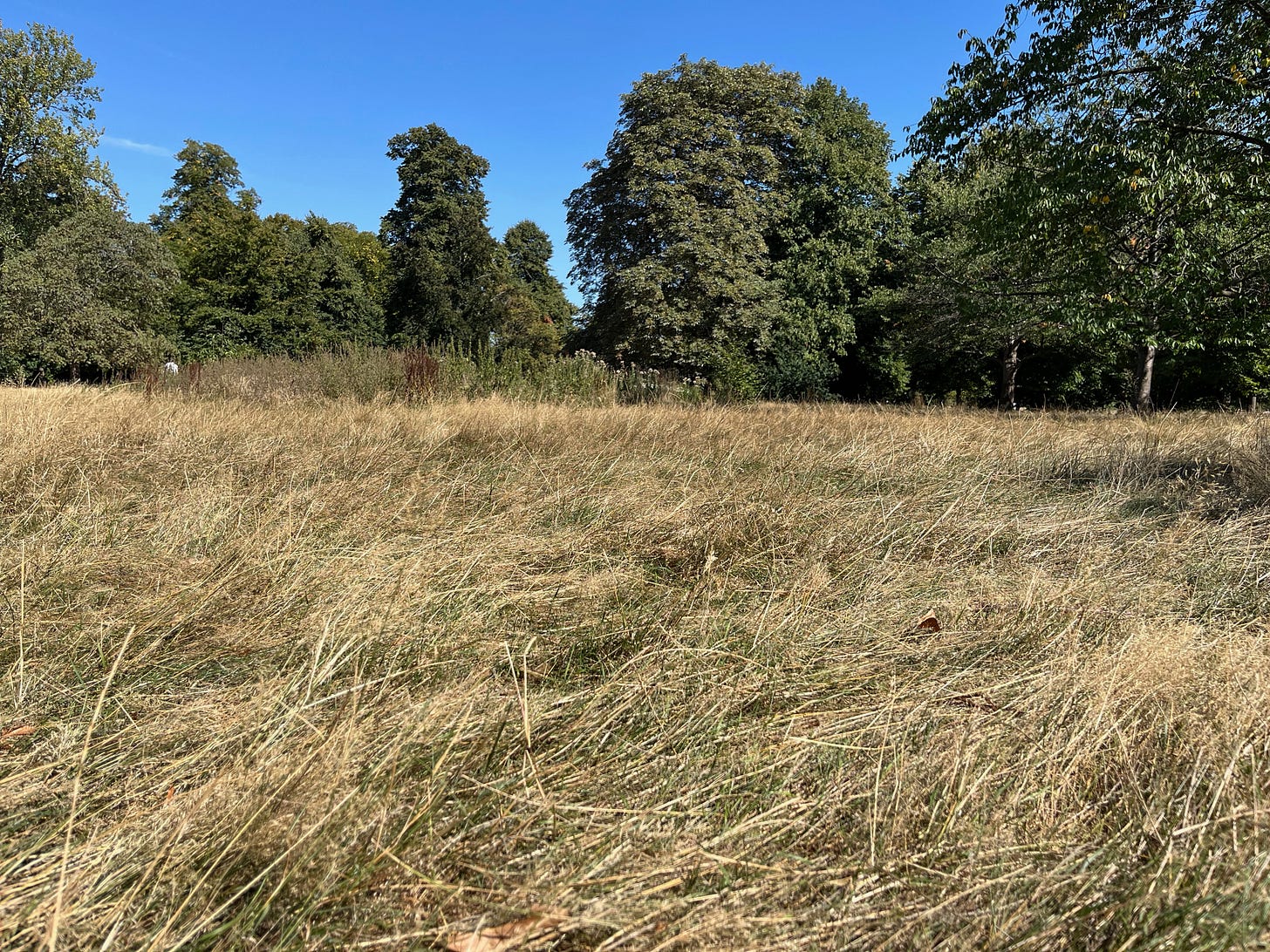
Darren Share, parks director at The Royal Parks, which runs green spaces including Hyde Park, told London Centric that this year’s heatwaves and lack of rain had created “extremely dry landscapes across London’s parks with a high risk of wildfires starting and spreading rapidly”.
Paradoxically, solutions for other climate and sustainability issues can make fuel more prevalent for wildfires.
Vegetation is one of the ways to mitigate against the urban heat island effect, which makes London feel so hot – but if not maintained properly, it can increase the risk of wildfires.
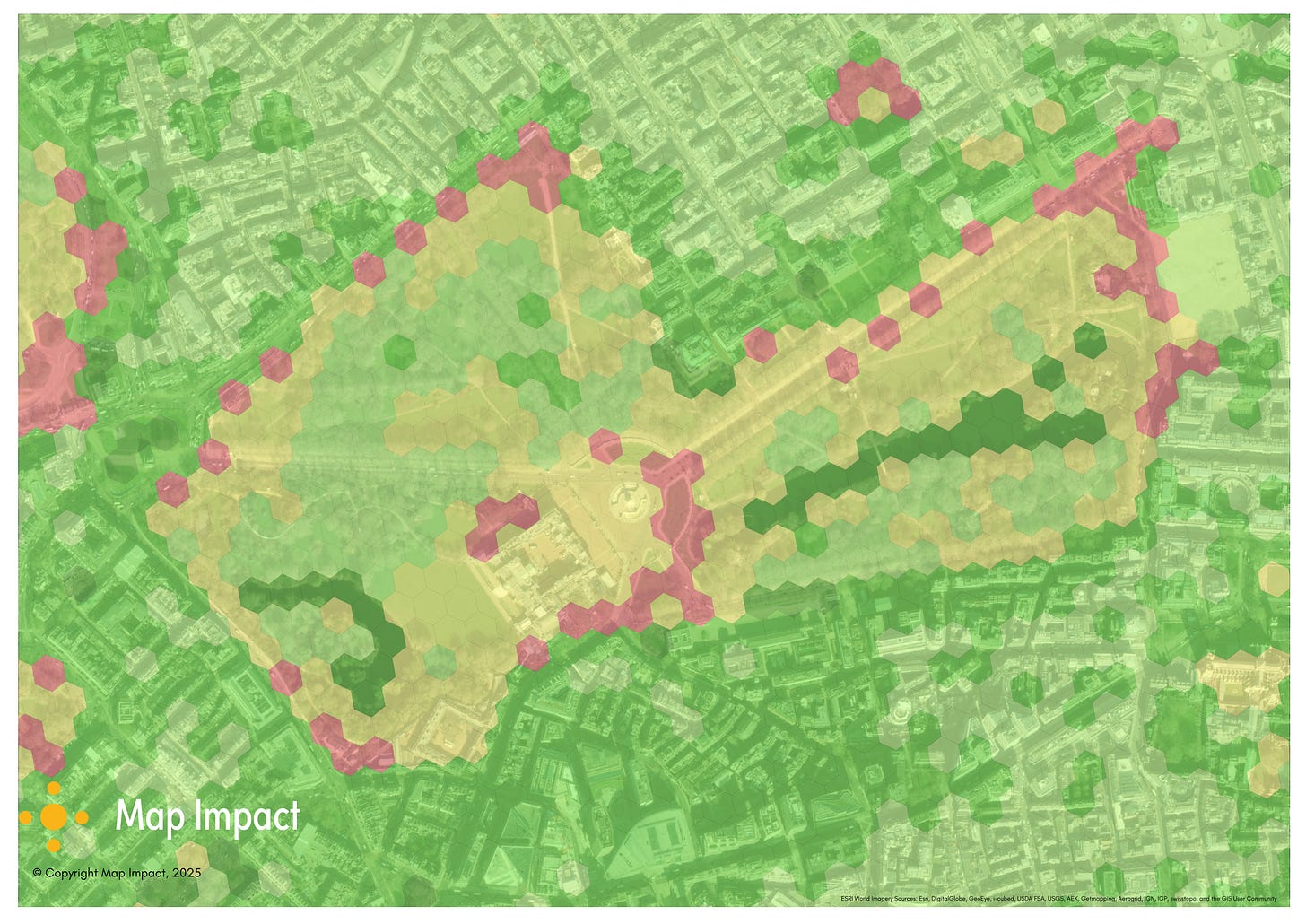
In addition, rewilding – letting grass and other plants grow longer to increase biodiversity – has a similar risk, creating areas of lengthy grass that can easily catch alight. Rewilding is a common technique used by The Royal Parks – the charity that maintains green spaces such as Hyde Park, Green Park, St James’s Park, and Bushy Park, all of which have elevated wildfire susceptibility.
Well-maintained vegetation is one of the most effective ways of reducing wildfire risk. Despite their location in areas at risk of wildfires, Kensington and Buckingham Palaces themselves were protected by their manicured lawns and grounds, Smith claimed.
Awareness about the risk is also crucial, particularly given the human cause of many wildfires, said Map Impact’s Flemmings.
He said that during a heatwave the media use pictures of Bournemouth Beach filled with lots of sunbathers: “That’s the mentality still in the UK, that this hot weather is a really good thing.. … But people aren’t aware of all of the dangers of this.”
If you want to get in touch with London Centric then message us on WhatsApp or email — or click below to leave a comment.




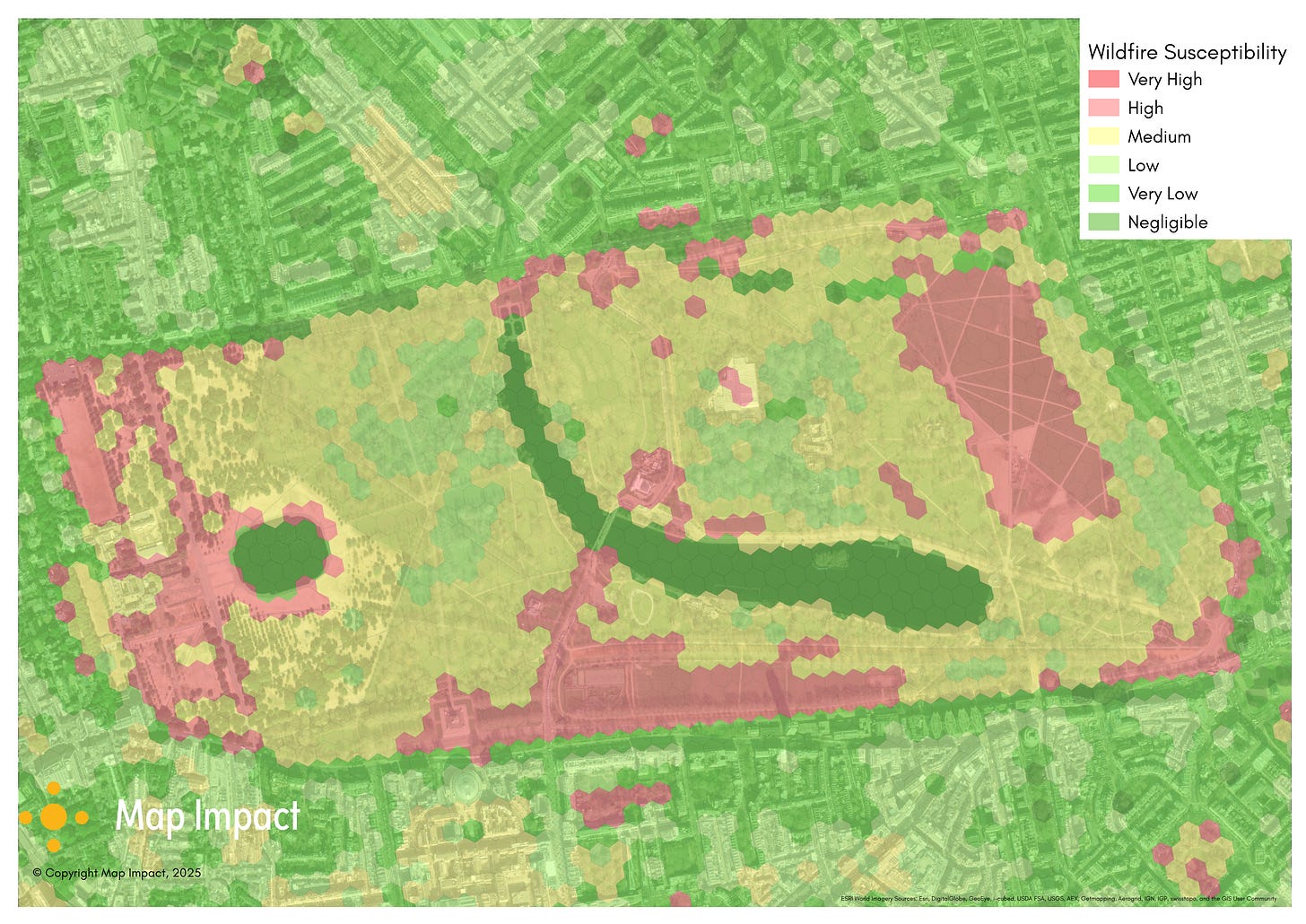
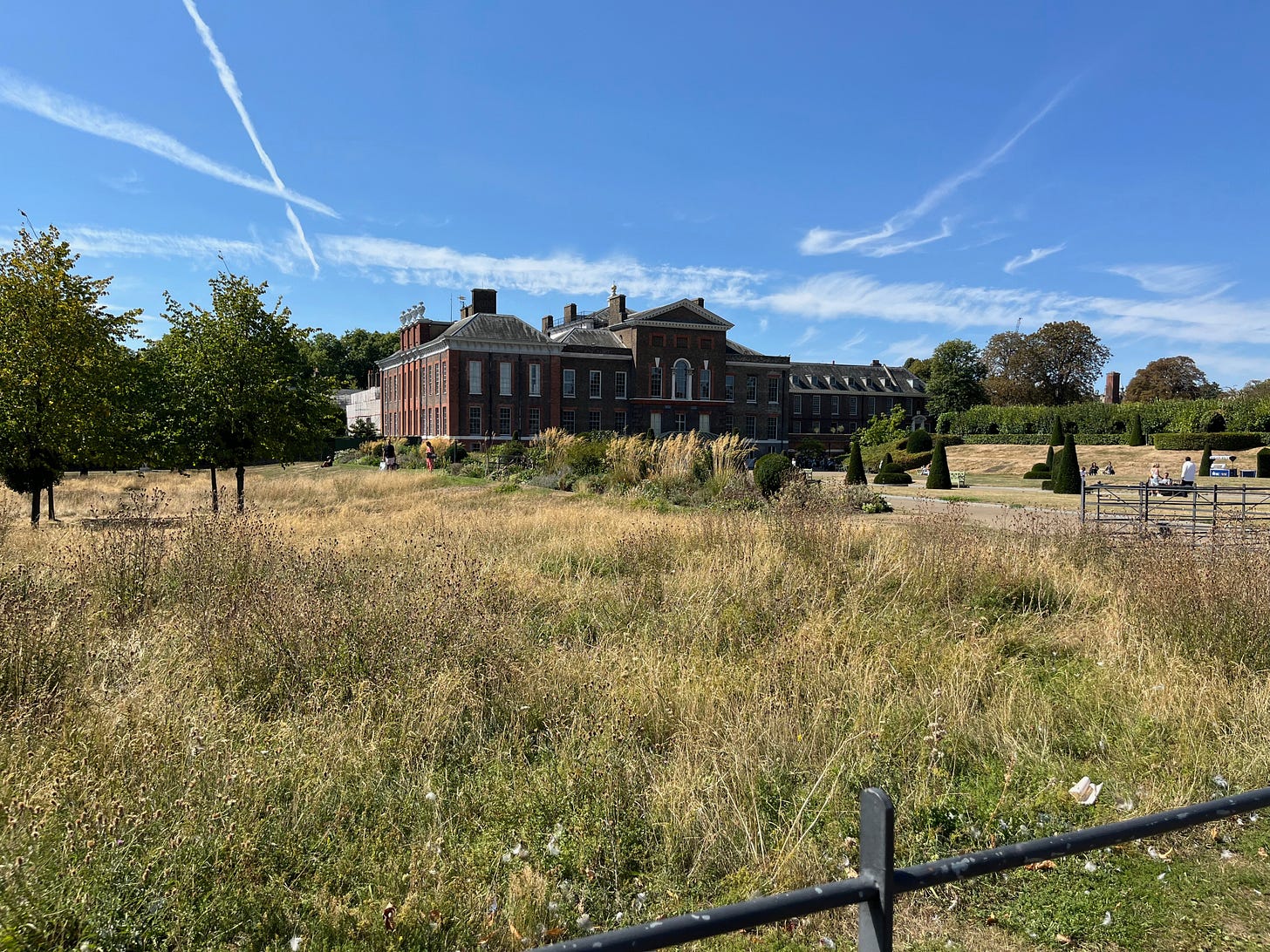
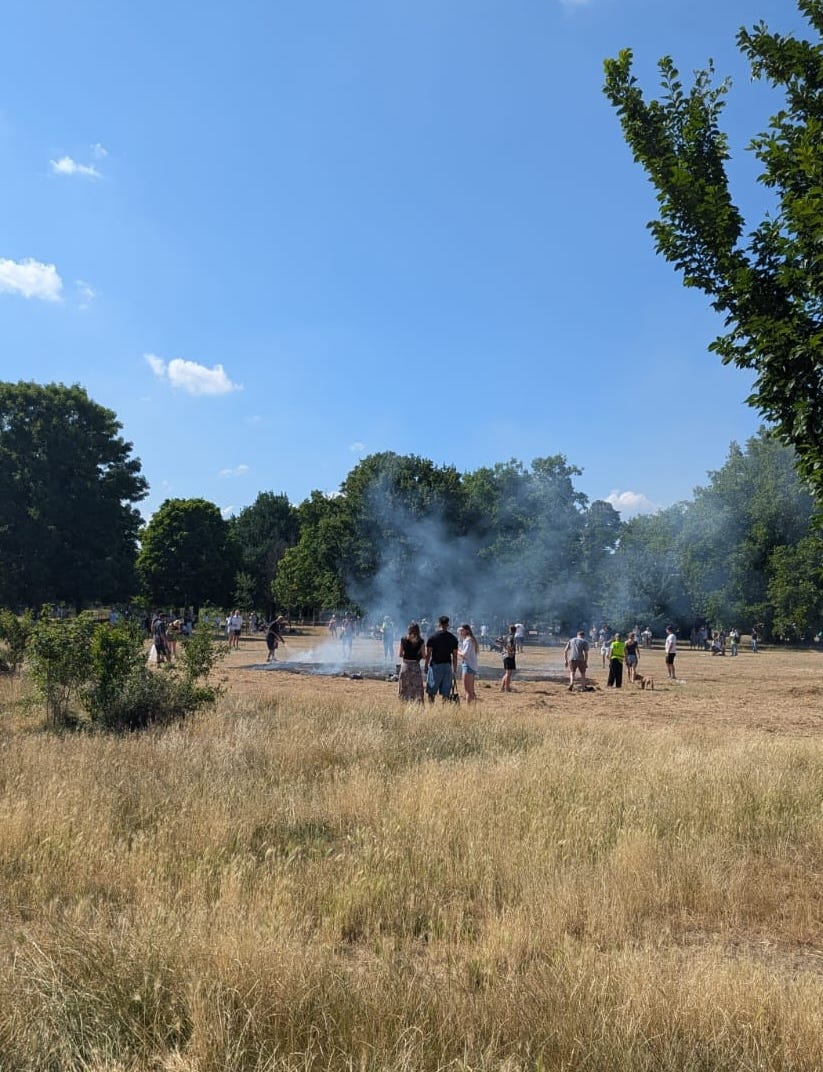
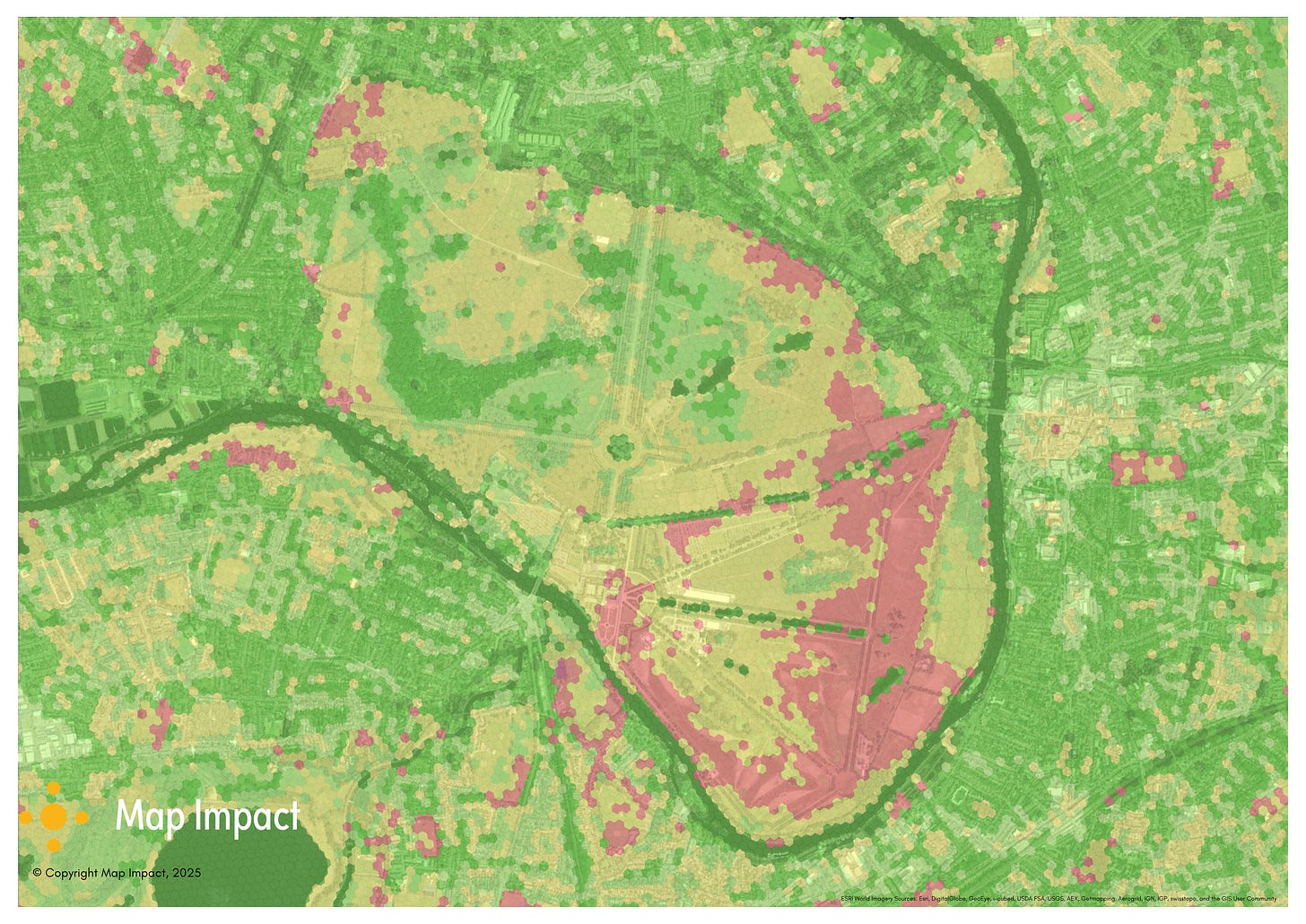
My theory on the phone/music thing is there are both more sounds to listen to, and the way that those sounds are encountered. Eg, in the old days you'd plug your headphones into your iPod, press play and essentially ignore your iPod for a while.
On phones, however, we're constantly encountering new videos on social feeds, voice notes etc – and so if you're scrolling without headphones and encounter something you want to watch, then you're faced with faffing around mid-journey pulling out headphones for a thirty second clip/one song/etc, or just pressing play and listening on the speaker that's right there.
People have forgotten a lot of what is acceptable on public transport in general. The number of times I've been hit by someone's backpack on a full tube has gone up drastically in recent years.
There used to be signs to take backpacks in your hand or leave them on the floor, these have disappeared in the last years and now a number of people just don't "get it".
One can only hope that TFL puts signs up for everything that is not acceptable, including phones/tablets on speaker. Maybe people will feel a bit more empowered to ask the infringers to stop.